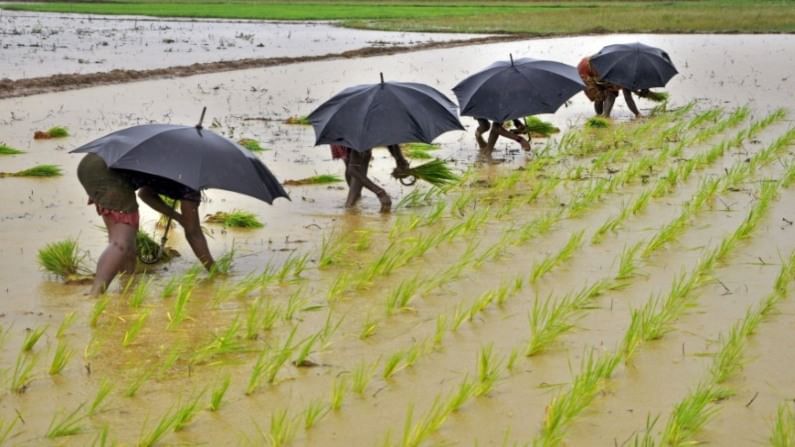Truant monsoon hits sowing of kharif crop
The economic recovery after the second wave of the pandemic that experts are predicting is crucially dependent on the rise of consumption

After a promising start in June, southwest monsoon faltered in July raising concerns about the kharif sowing season. As a result of the halting rains, the area under kharif crops to managed to reach only 5 crore hectares by July 9, which was 10.4% lower than 5.56 crore hectares sown till July 9 in 2020. According to an official statement by Mrutyunjay Mohapatra, director general, Indian Meteorological Department, monsoon rainfall was 10% above normal in the month of June, but 26% deficient till July 18 in July. At least 22 states are facing deficient rainfall. Incidentally, IMD had predicted normal monsoons this year.
Monsoon is extremely significant for the economy of the country since the country’s foodgrains and other crops are largely dependent on a good monsoon in the absence of widespread irrigation facilities. Monsoon is the time when kharif crops are sown.
Rice most significant
Sowing of kharif food crop such as rice needs ankle-deep water in the fields. Other major kharif crops are millet, maize, sugarcane, sorghum, groundnut, soybean and cotton.
“During 2020, by 10 July, aided by good progress of southwest monsoon, sowing activities had raced ahead. This year, monsoon commenced on a positive note with the first three weeks of June recording satisfactory rainfall. Then, monsoon clouds stalled for more than three weeks beginning 21 June,” the Centre for Monitoring Indian Economy (CMIE) noted.
Road ahead
“The break in monsoon activity continuing well into second week of July 2021, has raised some concerns as the cumulative rainfall for the season has dipped into a deficit of 8% as of July 11. But with nearly 65% of season ahead of us, a turnaround in rainfall (as anticipated by IMD and SkyMet over the next few days) can mitigate concerns and augurs well for sowing and output for the ongoing Kharif season,” said Yuvika Singhal, economist, QuantEco.
Among the regions that suffered shortfall in rains during the week ended July 7 were Uttar Pradesh, Haryana, Punjab, Rajasthan, Madhya Pradesh, Gujarat, Madhya Pradesh, Maharashtra, Marathwada, Vidarbha and coastal Karnataka.
Acreage dips
According to agriculture ministry data, planting of rice fell from 171.244 lakh hectare last year at this time to 161.97 lakh hectare.
The area under coarse cereals fell by 25%. Oilseeds have suffered 14% drop in sowing area. Sugarcane and jute are the only kharif crop that have not suffered this year.
Coarse cereals need less water and farmers settle for them when the rains are deficient. Cultivation of oilseeds have suffered mostly in Madhya Pradesh and Rajasthan. The area under pulses, too, have come down by 10 lakh hectares.
However, rainfall picked up a bit in the week ended July 14 and the deficit dropped to 7% compared to the 46.3% deficit in the week ended 7 July.
Importance of agriculture
The importance of farm output has gone up with agriculture constituting 20% of the GDP in FY21 after a gap of several years.
The economic recovery after the second wave of the pandemic that experts are predicting is crucially dependent on the rise of consumption, that is possible only on the back of rural income going up which, in turn, is dependent on agriculture.
A lot depends on the sustained revival and progress of rainfall in the coming weeks, said CMIE.